If you’re reading this article, the following is likely true:
- You sell something, online or off;
- You know the importance of customer testimonials; but
- You don’t have many to highlight to potential buyers (or maybe any, for that matter).
If that sounds familiar, then today’s guide is for you. In it, I’ll share the nine types of testimonials you can need to handle objections and drive more sales.
Let’s get started.

What Is a Customer Testimonial?
A testimonial serves as an endorsement from a happy customer, who validates the worth of a product or service. Customer testimonials come in a variety of formats, like written reviews, video testimonials, case studies, social media posts, and more.
No matter which format they come in, the goal is to make your brand and products look amazing.
Customer testimonials are sometimes paid endorsements, as found with influencer marketing. But more often than not, customer testimonials are given by customers, voluntarily, or upon a company’s request.
When combined with good copywriting, sharp salesmanship, and targeted marketing, customer testimonials can help buyers overcome objections, boost online sales, and turn customers into brand ambassadors.
9 Customer Testimonial Examples You Need to See
Now that you know what customer testimonials are let’s dive into the online brands that are nailing their word-of-mouth advertising, starting with…
1. Quote Testimonials
There are three types of quote testimonials:
- Quotes;
- Quotes with a hero image; and
- Quotes with a hero image and call-to-action (CTA).
Let’s discuss each briefly.
i. Quotes
We’re all familiar with them. And if you were lucky enough to have a college yearbook, you might have been asked to give one to accompany your photo:

Quotes are one of the earliest types of testimonials (and one of the easiest to acquire, regardless of industry). First appearing in newspapers, quotes are now commonplace on product pages, homepages, and other commercial intent pages.
Quotes serve the purpose of instilling visitors with confidence that the purchase they’re thinking of making is the right decision.
Poo~Pourri, a company that devises and sells fragrant sprays for toilets, uses a slider on its homepage to feature testimonials from happy buyers:
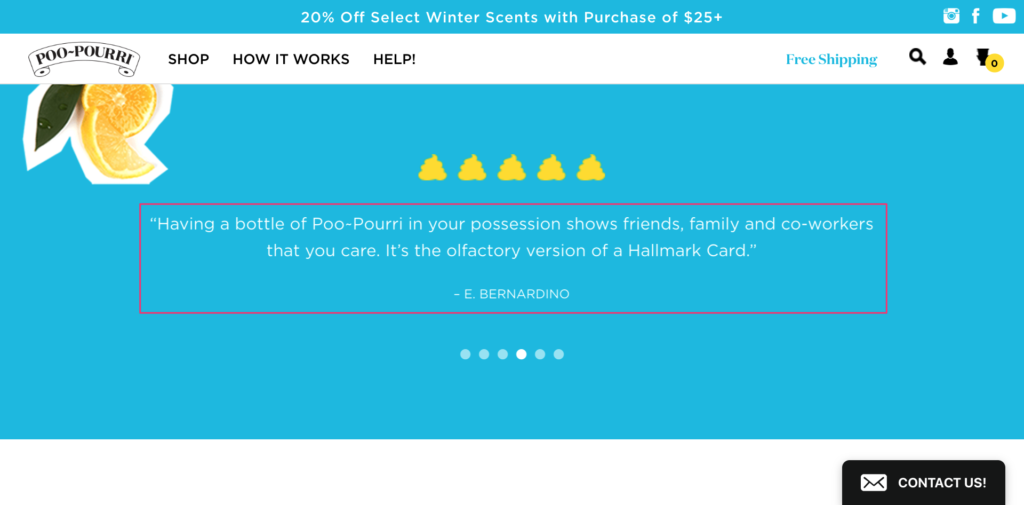
Adding additional features like a slider—or in Poo~Pourri’s case, a slider with a “star” rating—gives readers more to engage with and legitimizes the testimonials further.
ii. Quotes With a Hero Image
While easy to gather, quotes are also easy to fabricate. Companies know this. And it’s why many add hero images to their testimonials.
Pictures increase conversions in many cases because it’s easier for prospects to identify with buyers. When 161 Driving Academy replaced their stock hero images with images of real people, they increased their conversion rate by 161%.
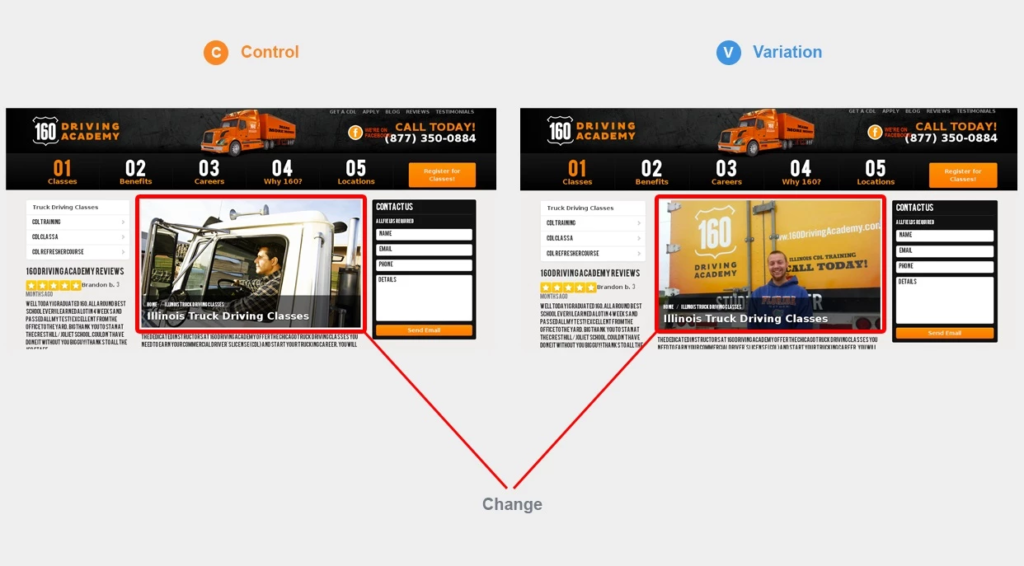
Birchbox features high-resolution hero images to accompany their testimonials for that very reason. When you see a quote comes from a customer—just like you—it’s easier to empathize and move forward with making a purchase:
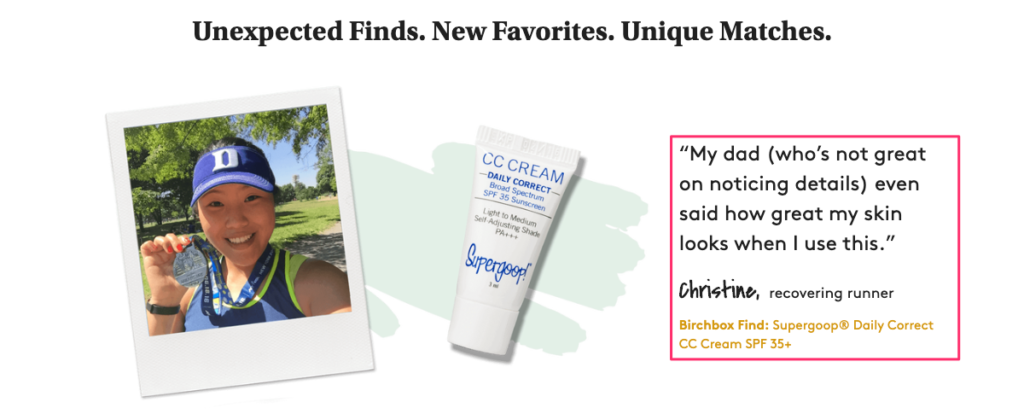
If evangelical customers are happy to wax lyrical about you, why not show them in a good light, too?
iii. Quotes With a Hero Image and Call-to-Action (CTA)
You would think a quote and a hero image is enough for a prospect to buy something, right? Wrong.
We can never think prospects know what to do; we have to take them by the hand and show them. And it’s precisely why good testimonials always need a strong call-to-action (CTA).
Following Birchbox’s example, Marucci features a quote with a hero image and a CTA on their homepage, inviting readers to read a case study (more on that shortly):
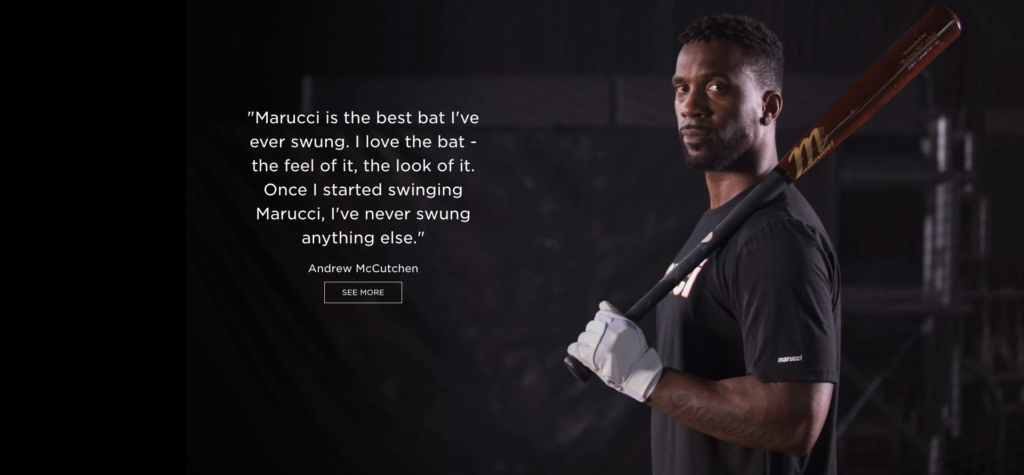
If a visitor is interested, they can learn more about David Ortiz’s transformation before deciding whether Marucci is for them.
Zapier goes one step further with their testimonials. Rather than feature their testimonials on a relevant page, they include them on related posts, namely, in the form of slide-ins:
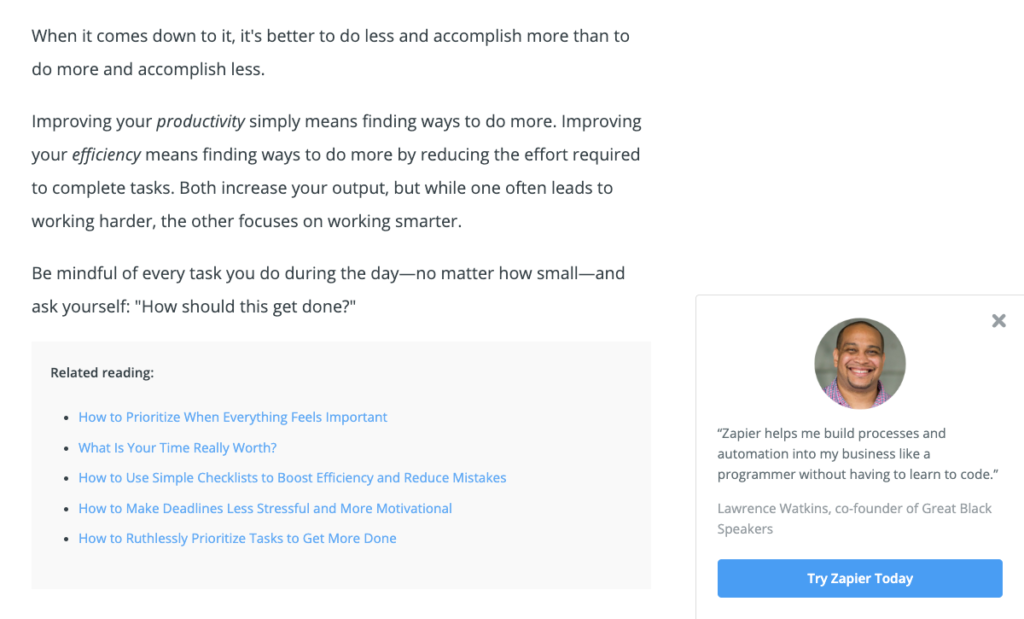
One way to differentiate yourself when writing testimonials is by using what Copyblogger calls a reverse testimonial. Here, the testimonial begins with the buyer’s objection, before continuing with praise and ending with an eventual overcoming of the initial skepticism.
Here’s an example from Bony to Beastly:
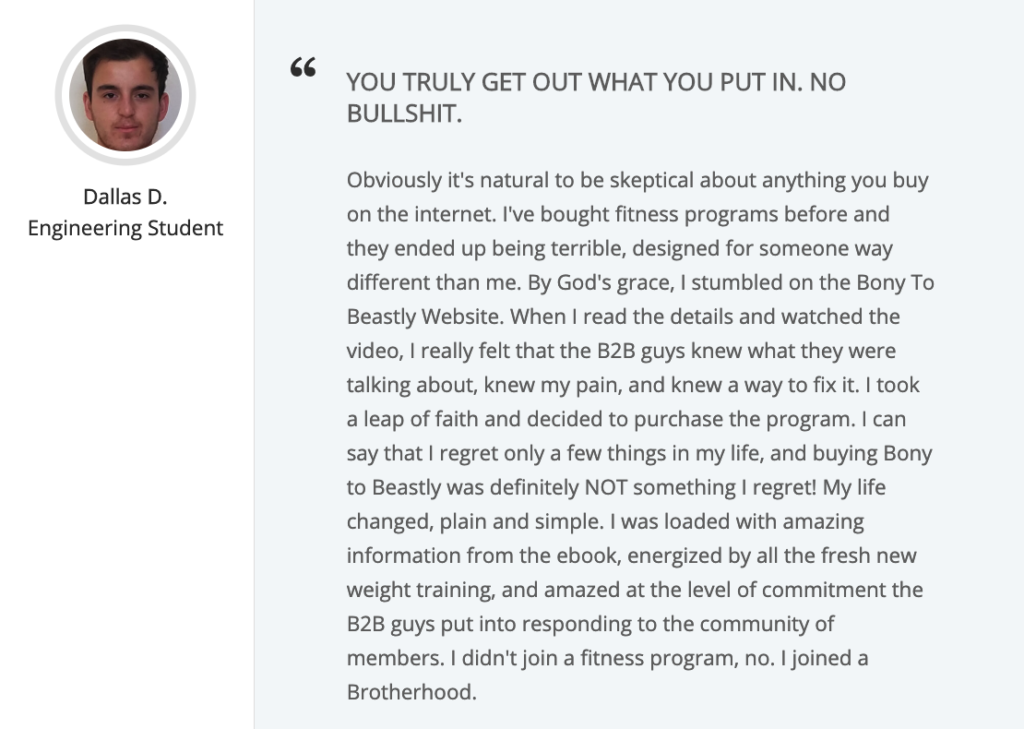
In this example, Dallas addresses a common concern prospects have when buying online (“Is this a scam?”) before transitioning into his transformation having taken action (read: bought the product).
These testimonials don't just work for your site – they can work in your automation workflows too. Ernest Capbert from TOG Knives explains that they use customer testimonials to support their automation workflows alongside their site and other informative content they create.
Action Item(s)
If you’re using quote testimonials, make sure each has a hero image and relevant CTA that gives visitors the chance to learn more about the customer’s transformation.
2. Social Media Testimonials
Social media has changed the way we express ourselves. When we’re not Instagramming our lunch or asking for likes, we’re taking to social media to voice our dreams, fears and occasionally, frustrations with our favorite brands.
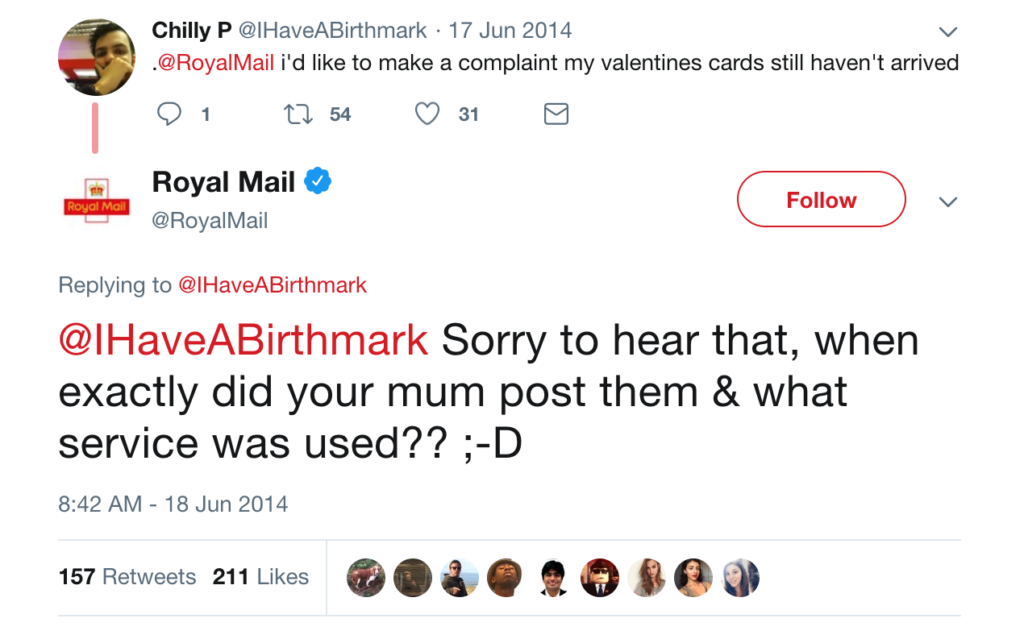
A cut above quotes, social testimonials are useful because it’s possible to click through and see the person you’re reading about is a real person, living an authentic life.
Casper embeds tweets and Instagram posts from customers on their site to highlight tweets from real customers:
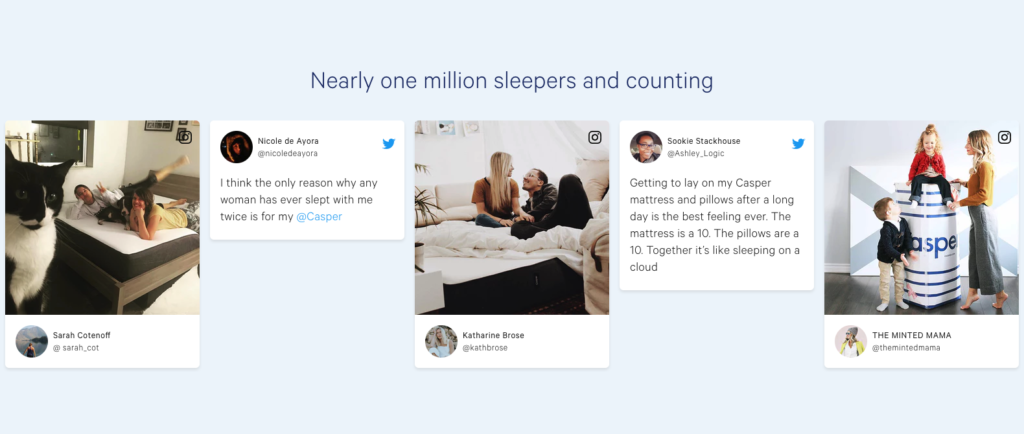
Fabletics, meanwhile, encourage customers to share images of themselves using the product on Instagram with the hashtag #MyFabletics…
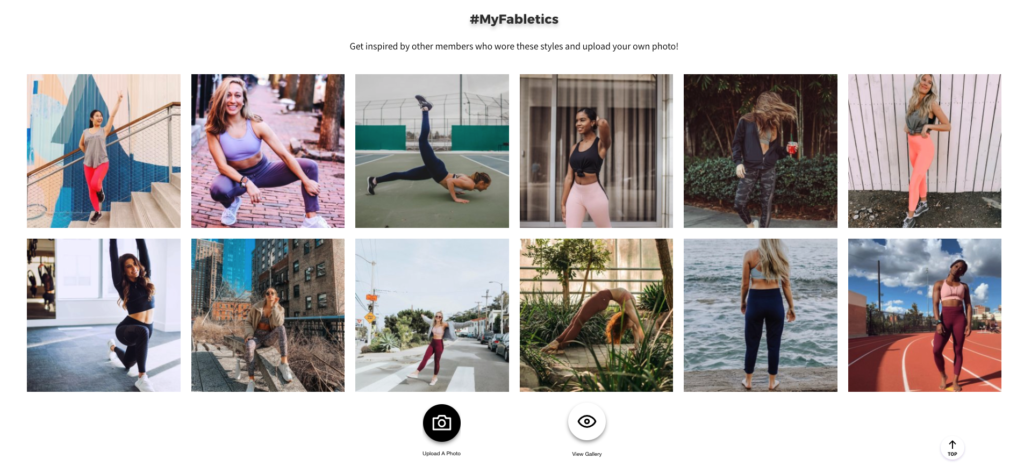
…and that’s precisely what they do.
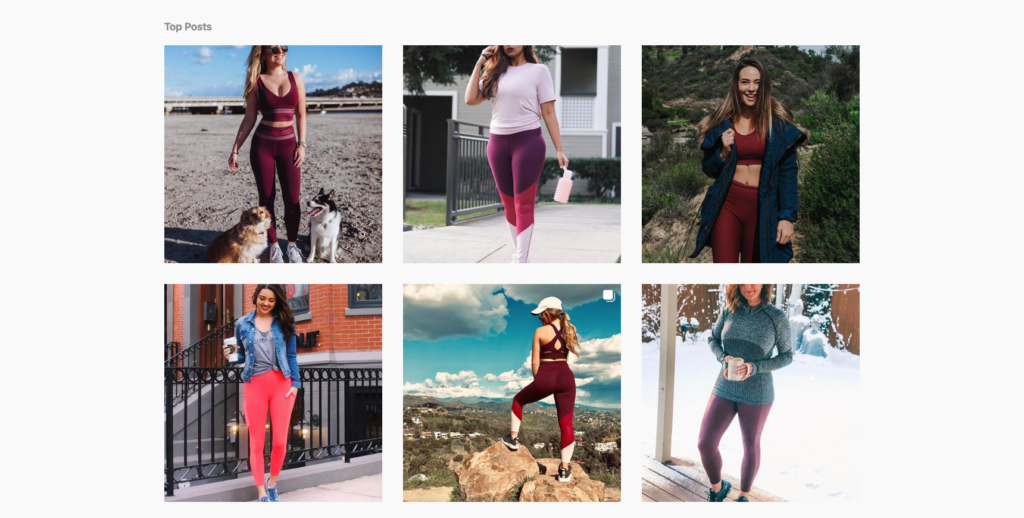
As of writing, the #MyFabletics hashtag has been used more than 37,000 times:
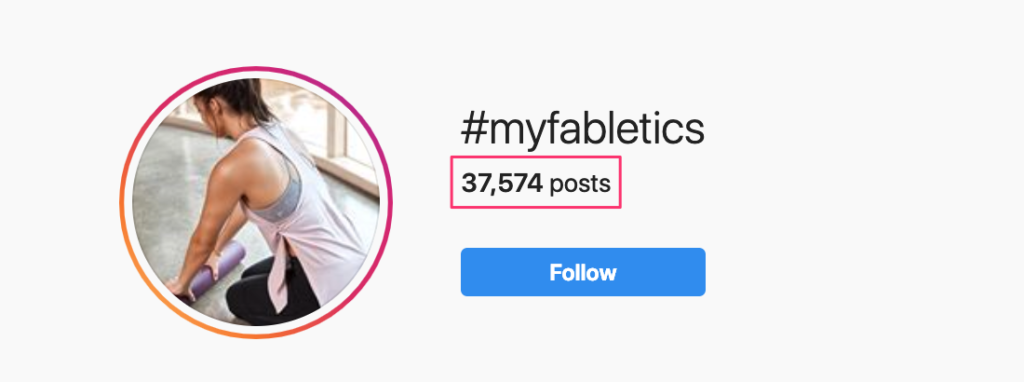
Social media has given people a voice. Use it to your advantage as and when it’s needed.
Action Item(s)
Invite customers to leave feedback on social channels after making a purchase. Then, embed any positive feedback on your product pages.
3. Consumer Reviews
You’re probably familiar with social proof. If not, social proof is our tendency to assume that the actions of others reflect the correct behavior for a given situation.
But not all forms of influence are alike. What’s more important is when the actions of others belong to people who are similar to us.
In one 2008 study, hotel guests were found to be more likely to reuse their towels when told the majority of the prior occupants of their particular room had participated, than those who had learned the norms for the hotel in general.
To put it another way, we prefer people who think similarly to ourselves. If you resemble a previous buyer, you’re more likely to be receptive to their testimonials. It’s perhaps not surprising, then, that we’re so responsive to consumer reviews.
According to Jack Benzaquen of Duradry, not using UGC and customer tutorials is a huge opportunity loss.
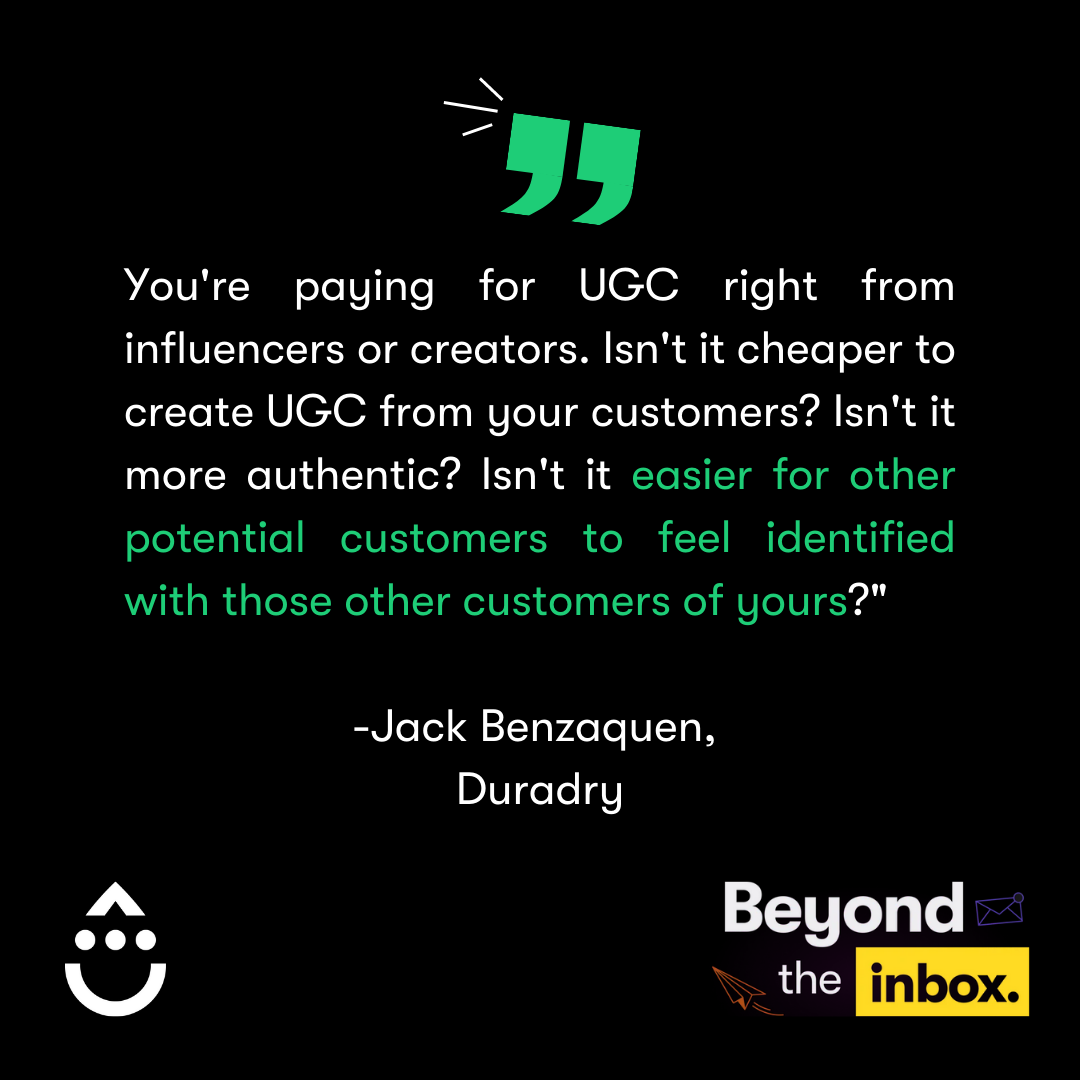 In fact, according to research by Deloitte, 60 percent of people rate reviews as equally trustworthy as information from friends and family.
In fact, according to research by Deloitte, 60 percent of people rate reviews as equally trustworthy as information from friends and family.
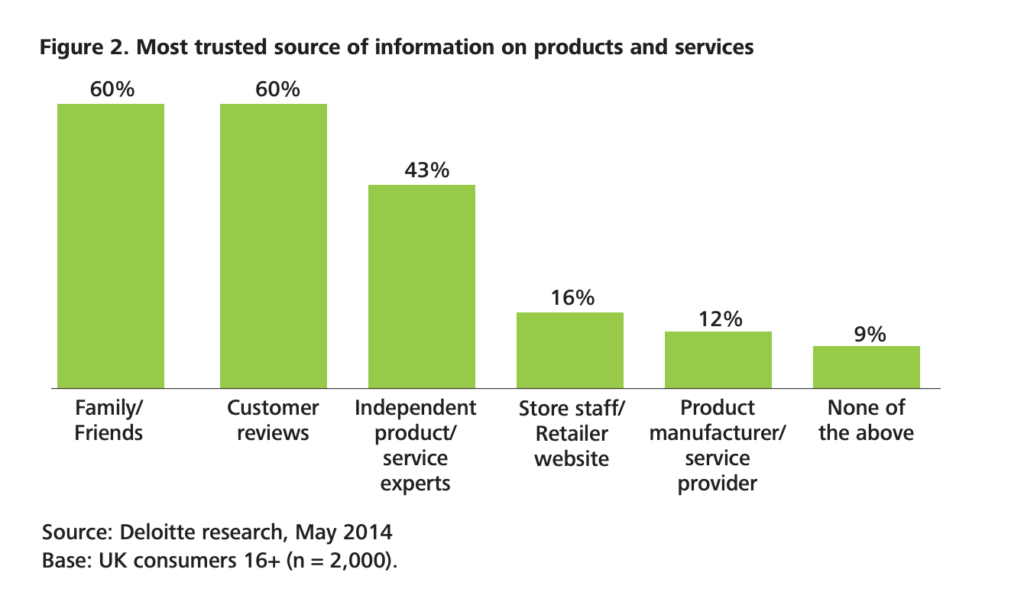
Brands like Harry’s, a men’s shaving company, use TrustPilot to boost their trustworthiness.
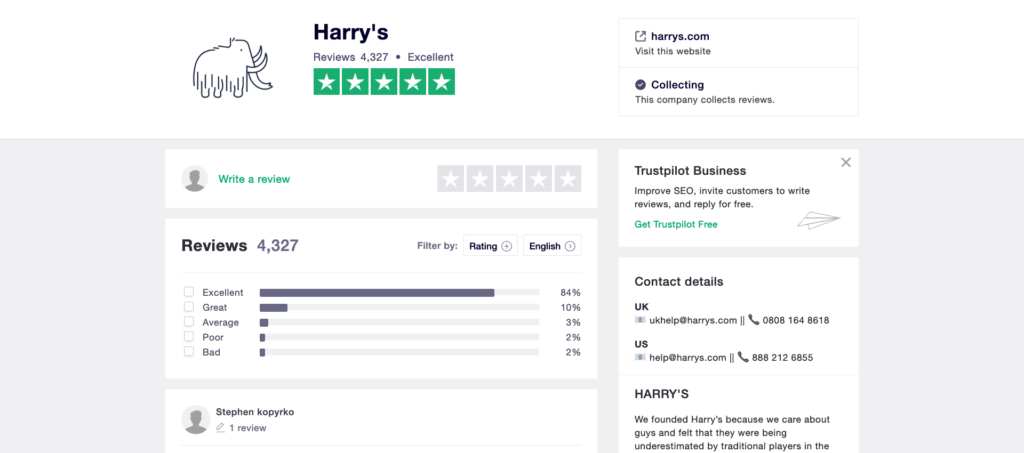
Consumer reviews are often the easiest of the seven types of testimonial because:
- They’re easy to ask for (especially after the buyer made a purchase); and
- You can automate the entire process meaning you can collect reviews on autopilot.
Here’s a great example of a customer testimonial email from Zalando that goes out 14 days after you made a purchase.
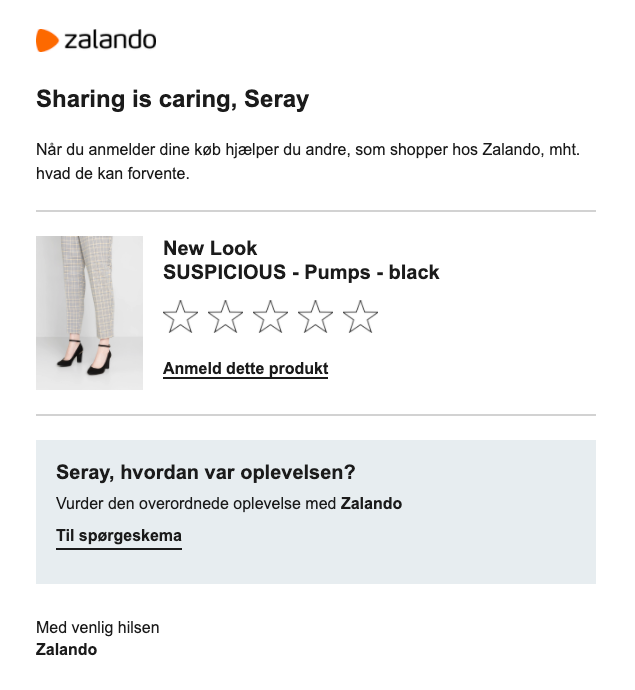
Action Item(s)
Email customers 14-days after their purchase asking them to leave a review on an industry-relevant review site. Then, showcase the reviews on your website.
4. Influencer Testimonials
Influencers are a lot like high school quarterbacks. They’re popular amongst their peers but almost impossible to befriend.
Getting the coveted high-five in the hallway from an influencer is impressive in its own right. But what’s remarkable—and where you ought to focus your outreach efforts—is getting press from influencers in your market.
Think about it: Everyone wants to get featured in Entrepreneur, Forbes, The Huffington Post, etc. But there’s a problem.
Everyone’s gunning for them. What’s better is getting noticed by the movers and shakers your audience is most familiar with.
Take Di Bruno Bros., for instance. They specialize in gourmet gift baskets and travel the world to find the most delicious cheeses, meats, and specialty foods out there. And their efforts pay off.
Having caught the attention of industry giants Travel + Leisure and Serious Eats (among others), Di Bruno Bros combine quotes with influencer badges on their media page:
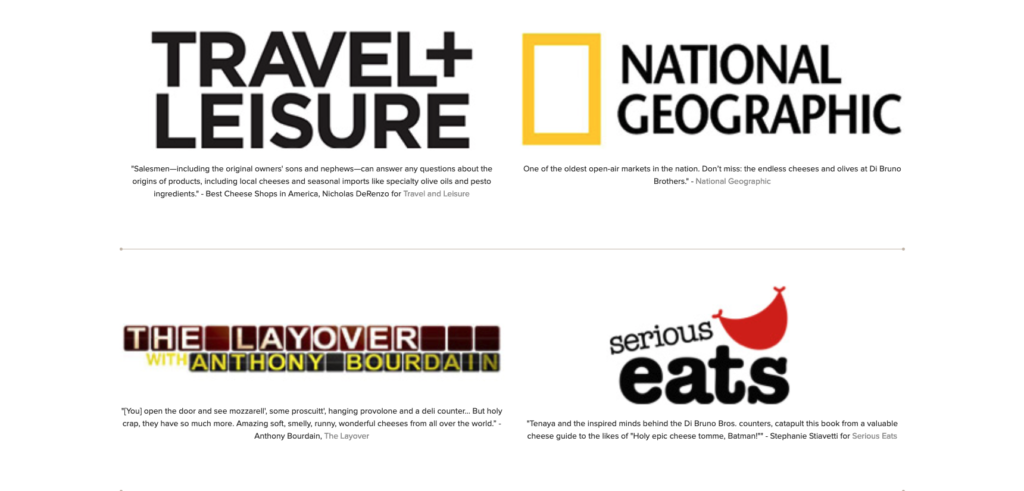
You can’t always attract influencers, that’s a given. But you can increase your chances of getting noticed by being the best at what you do.
Action Item(s)
Reach out to authorities in your industry and ask if they would like to try your product.
5. Blog Post Reviews
If you’ve ever googled “[product] review,” you might have read articles like this:
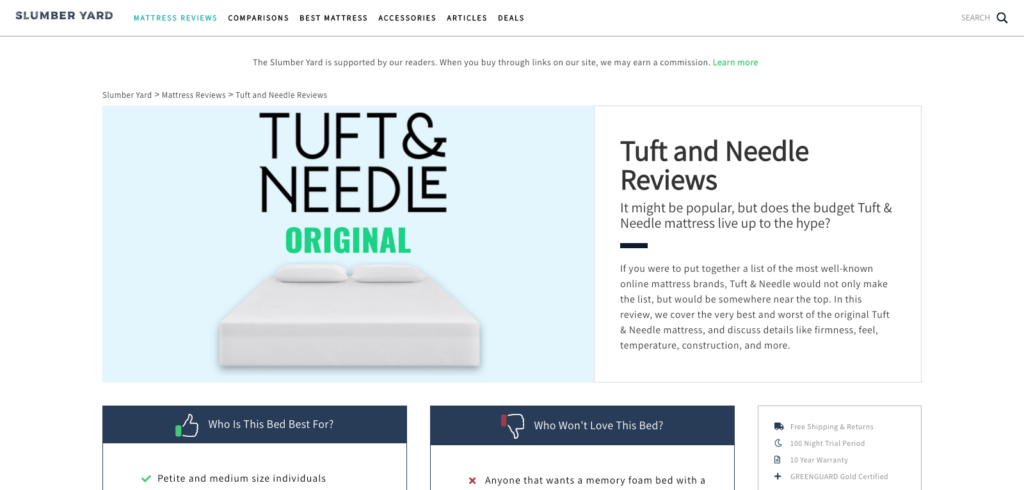
Slumber Yard’s review of Tuft & Needle, a direct-to-consumer mattress and bedding brand.
If you have, you might have noticed that an affiliate almost always writes them.

And if you think about it, it makes sense:
The affiliate writes a blog post, reviewing a product, and thereby earns a commission for each referral, and the retailer acquires new customers without spending on advertising. Win. Win.
Action Item(s)
If you have an affiliate program, pitch it to your brand ambassadors, or better, reach out to famous bloggers or media outlets in your industry (if they have a history of writing reviews, of course.)
If you don’t have an affiliate program, consider creating one using a platform like Tapfiliate or Trackonomics. Then, follow the above advice. (Ideally, you want customers writing reviews more than referring friends.)
A word of warning, though: If you plan on paying a site to review your products or services, you need to familiarize yourself with Google’s new sponsored attribution.
6. Case Studies
Case studies are an opportunity to sell the reader on the transformation that a previous customer made.
Using a copywriting formula like Before-After-Bridge (BAB), you can show readers where a customer was before they made a purchase, where they are now, after making a purchase, and bridge the gap using your product or service.
Kevan Lee from Buffer summarizes the BAB formula nicely:
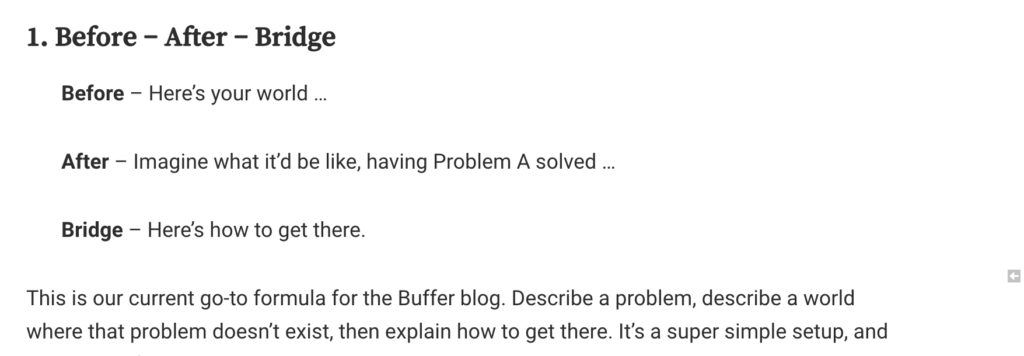
Care/Of, a New York-based supplement subscription service, uses stories masquerading as case studies to quell its buyer’s skepticism.
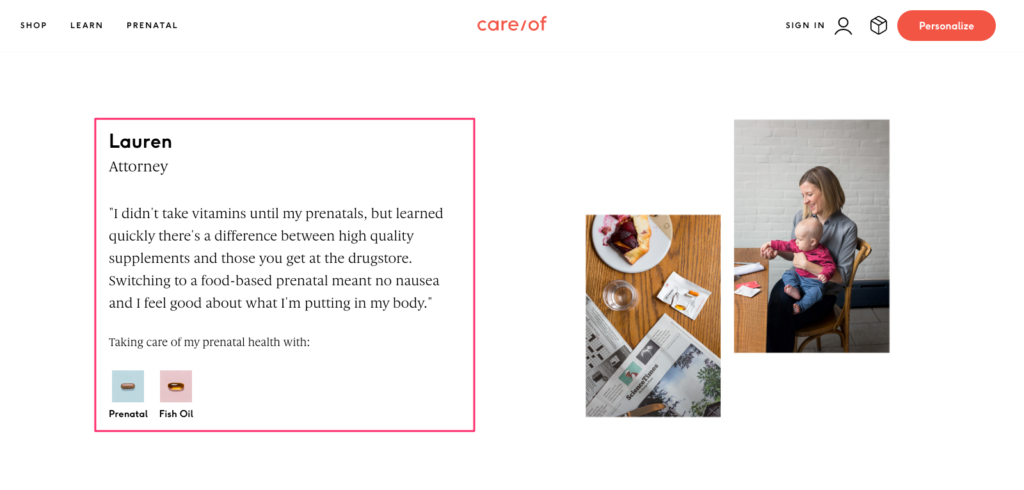
In an industry that’s rife with charlatans, Care/Of feature a range of customers—from yoga instructors to merchandising analysis and everyone in between—highlighting their stories. Who they were before they became buyers. Who they are now, having bought from Care/Of. How they feel now as a result of doing so.
The case studies are super brief, but it only takes a few sentences to summarize a buyer’s journey—and that’s often more than enough to sway on-the-fence buyers.
Action Item(s)
Invite a previous customer to tell their story having used your product, and focus on the transformation they went through having done so.
7. Video Testimonials
Video is fast becoming the number one marketing channel for business owners.
In fact, according to one report by Copypress, 51.9% of marketing professionals worldwide named video as the type of content with the best ROI.
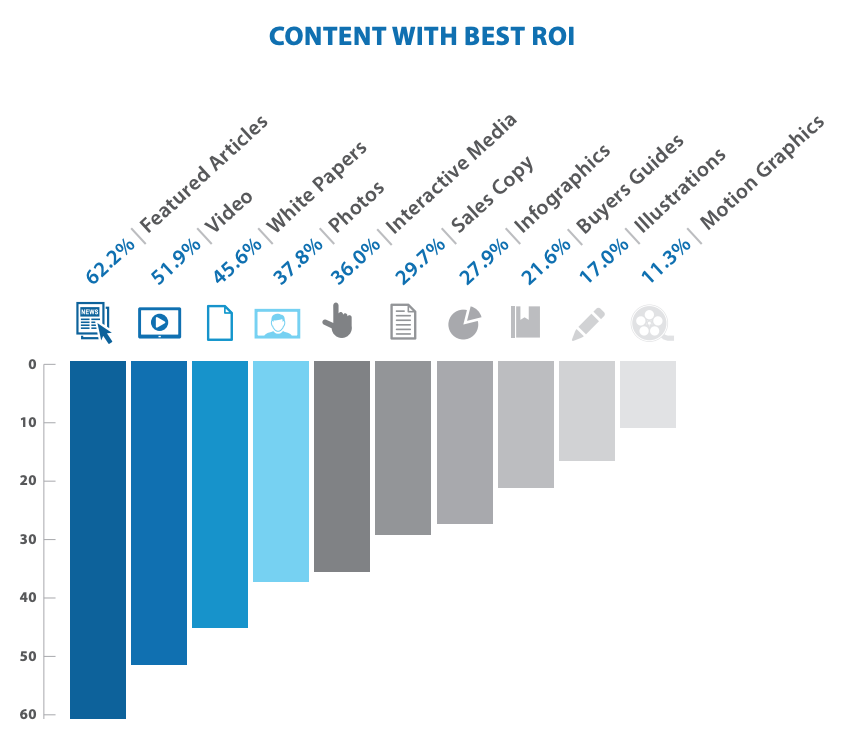
Brands like Orabrush were able to go viral seemingly overnight by leveraging the power of video to market their products. As Neil Patel aptly says, “If a picture’s worth a thousand words, then video is priceless.”
But video isn’t limited to product marketing.
Ramit Sethi from I Will Teach You to Be Rich, for instance, uses video to promote his flagship product, Zero to Launch—but with a twist.
Rather than focusing on the benefit to the viewer—something that’s often more than enough—Ramit focusing on his previous customers’ transformations, who they are now having enrolled in the program.
Merging professional production values with insightful interviews and accompanying case studies, Ramit showcases his most successful students to sell his course for him. (Note the “Success Story Quick Wins” callout box above the video for skim readers):
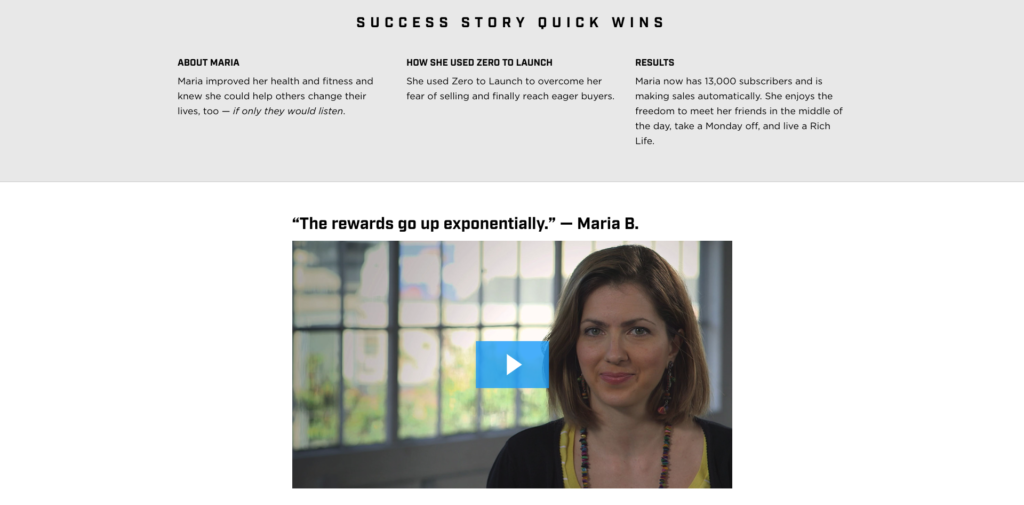
Other business owners, like Orabrush, feature customer video reviews on their homepage:

Once upon a time, video testimonials were reserved for companies with 6-figure marketing budgets. But today, anyone with a smartphone is a critic. Anywhere, anytime, a buyer can record a video and capture their thoughts on their favorite brand.
Action Item(s)
Ask customers to record a short testimonial video on their smartphone, discussing what they enjoy most about your brand. Then, showcase them to prospects at critical stages in the buyer’s journey.
8. Documentary Series
Like most marketers, I thought I’d seen everything when it came to customer testimonials.
That is until I came across Bryan Harris of Growth Tools.
In 2016, Bryan launched his flagship product, Get 10,000 Subscribers, but went above and beyond when interviewing previous customers:
He filmed a three-part documentary series.
With a camera crew on hand, Bryan visited three former students at their homes to document how their lives had changed after enrolling in his course.
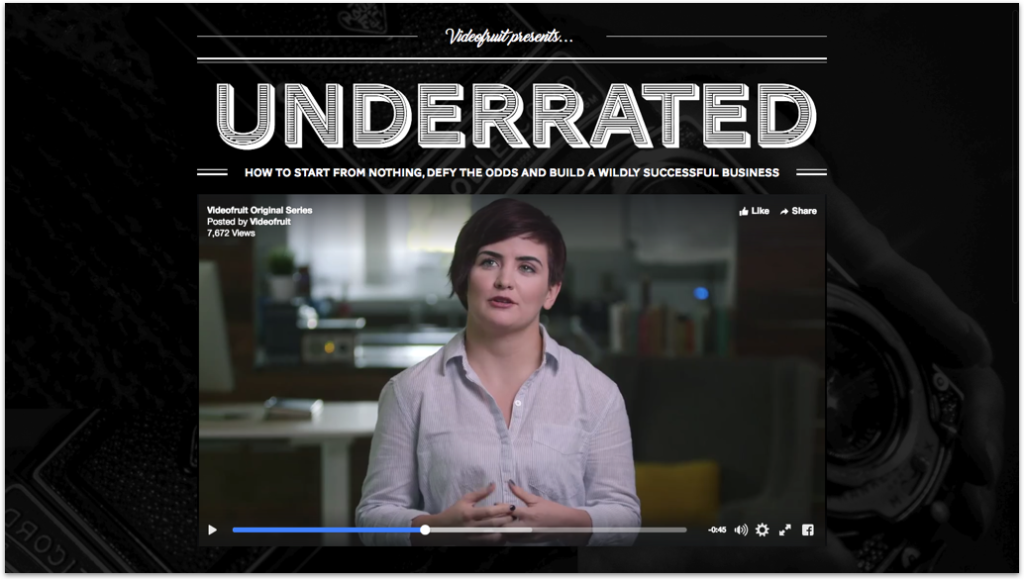
And the results were remarkable.
Viewers loved it, prospects bought into Bryan’s product more than ever before, and revenue went from $900,000 to $1.5 million in fewer than 12 months:
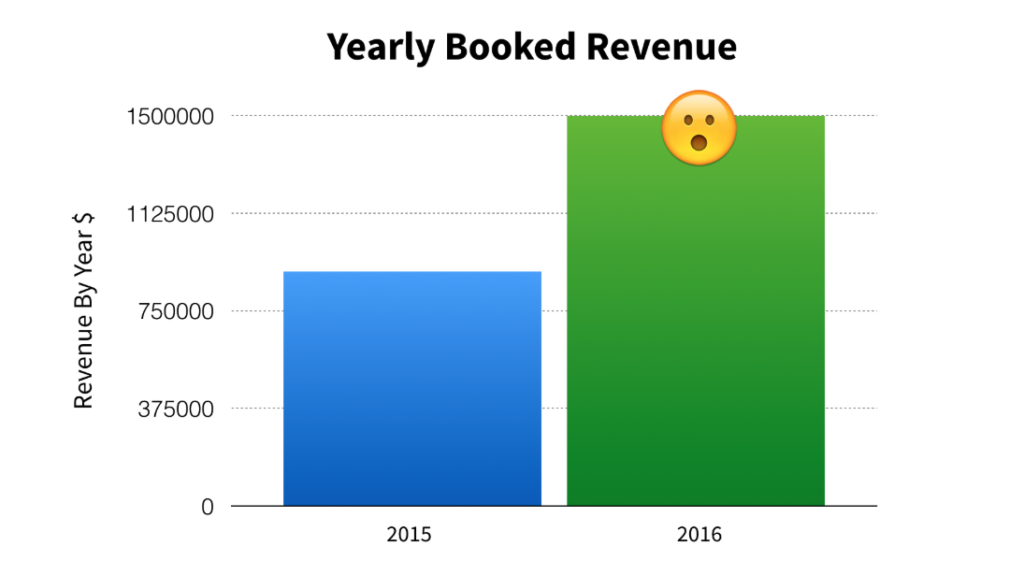
While it’s impossible to know how much the documentary series directly impacted Bryan’s annual revenue (only Bryan knows that), few can deny the influential power of highlighting customer successes.
There’s something about giving prospects a glimpse into what their life could be like if they made a purchase—one that takes product marketing to a whole other level.
Filming a documentary isn’t for everyone. And it might not be for you or your business. But more business owners are opting for more professional videos to market their products moving forward. And with good reason: it works.
Action Item(s)
Ask existing customers how their lives changed having bought your product. Then, feature them, and similar customers, in a documentary highlighting their transformations.
9. Media Coverage
There’s an old English proverb that says, “Any news is good news.”
And as online retailer MeUndies will tell you, they know that better than anyone.
A few years ago, Facebook banned one of MeUndies ads, claiming an ad with scantily-clad models violated their advertising guidelines. So, MeUndies responded to the fiasco with a new, albeit facetious ad:
Too good~@MeUndies nails this whole social media thing, responding to Facebook’s yanking their ads pic.twitter.com/NvdtpQDRH7
— Rob Majteles (@treehcapital) May 3, 2014
Media outlets like Digiday and Adweek ran it, and people talked about it online, praising the brand for their edginess and humor. MeUndies generated free press from the story, and journalists continue to mention it, to this day.
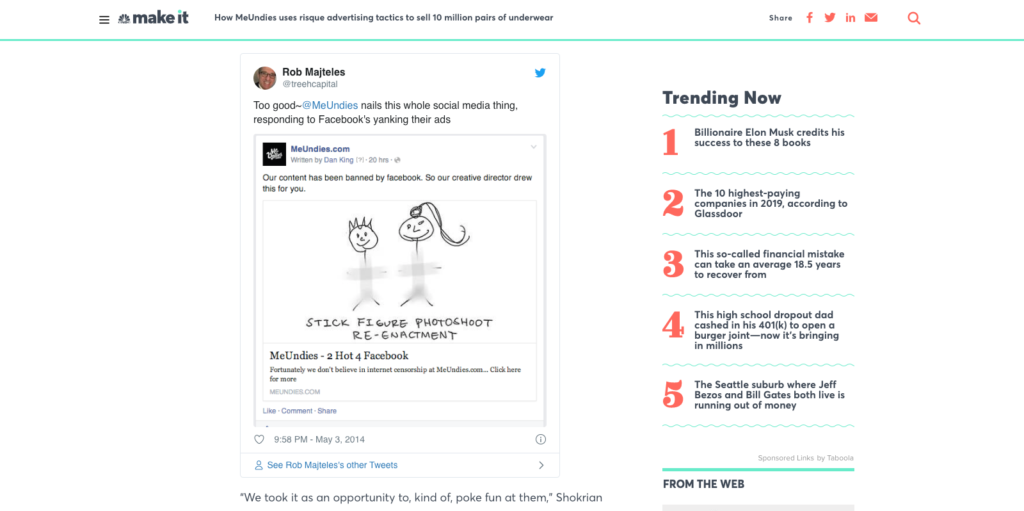
A recent CNBC article mentioning the incident—five years after the story first broke.
Not all media coverage needs to be controversial, of course.
Other retailers, like Beardbrand, have received media coverage for various reasons. Whether it was the founders’ appearance on Shark Tank or co-founder Eric Holtz’s unconventional startup story, the brand regularly populates my Google Newsfeed.
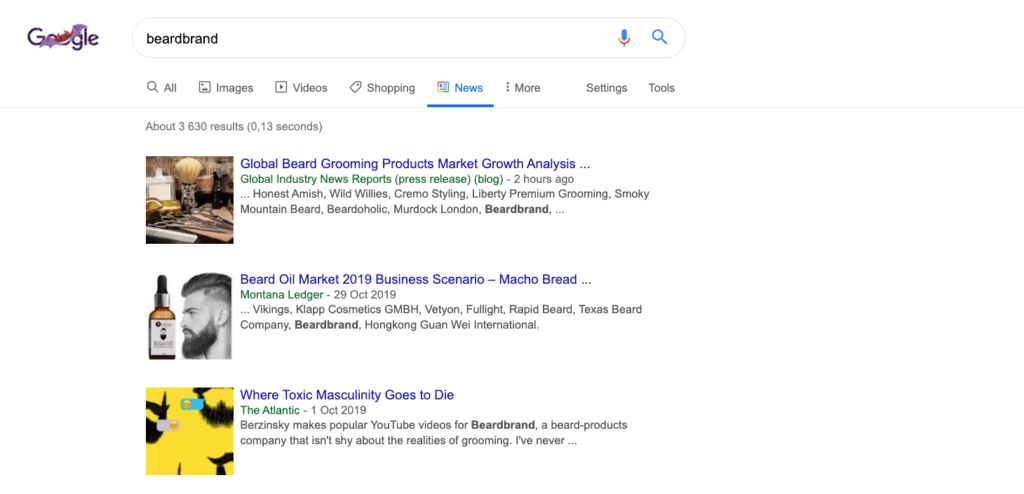
Getting media coverage, be it positive or negative, goes beyond the scope of this article. But if you’re looking to get started, follow the Action Item(s) for “5. Blog Post Reviews,” and focus on the local press, to begin with, before moving to more prominent media outlets.

Conclusion
Customer testimonials are more important than ever. Years ago, brands could divert your eyes from any negative press. Today, it’s a very different story.
Everyone with a phone, an Internet connection, and a Facebook account has an audience. With a few keystrokes, a brand can go from top of mind and tip of the tongue—to a mere afterthought.
But that doesn’t have to happen to you. I’ve shown how top brands are harnessing word-of-mouth advertising and using it to their advantage online.
Learn from their efforts, reach out to your customers, if need be, and in time, you, too, will have an army of people talking about your brand, both online and off.



